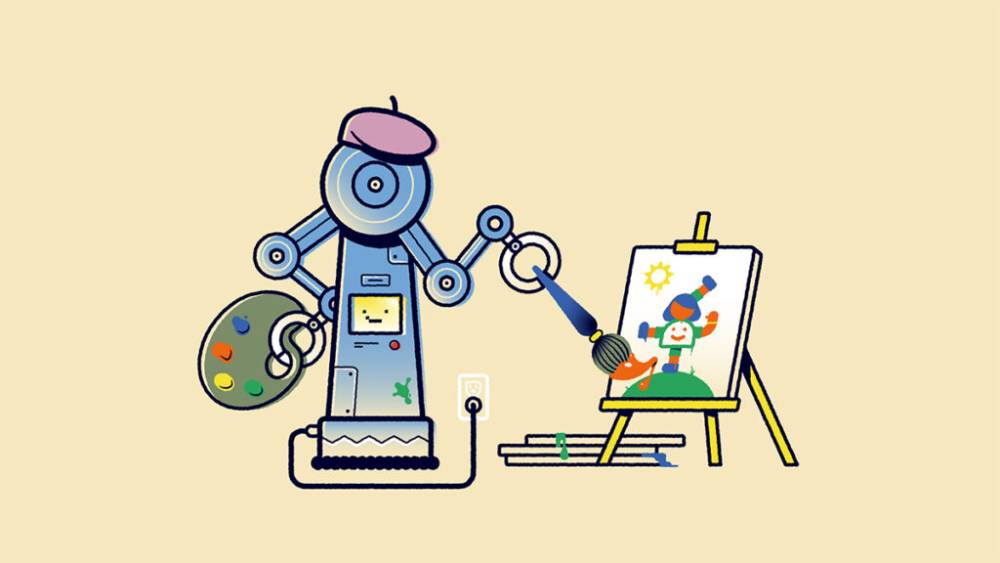📌 Gen AI không chỉ là công cụ tăng năng suất mà còn có thể làm xói mòn kiến thức, kỹ năng và kết nối nếu dùng thiếu cân nhắc. Lãnh đạo cần kiểm toán giá trị AI qua ba bước: xác định, tối ưu và lặp lại. Đừng để mất đi giá trị lâu dài chỉ vì hiệu quả tức thì.
Everywhere we look, we’re surrounded by messaging about the profound impact of generative AI. A steady stream of articles outlines how organizations can increase the speed and scale of work or automate and streamline processes, while our inboxes and social media feeds are bombarded with “top 10 AI tools” lists that promise to make us individually more efficient and to take menial or mundane tasks off our plates.
Let’s get one thing straight: Gen AI can absolutely help us produce a greater volume of output, more quickly, and with less human effort. Anyone who denies that is, well, in denial.
By focusing on the value of the output that AI produces, however, we tend not to think much about other sources of value, like what we learn and how we build relationships. We rarely ask: In what way does each activity we do create true and unique value? It’s time for leaders to take a cold, hard look at their organizations and ask that question so they don’t destroy more value than they create in adopting gen AI.
Where Value Comes From
As much as I wish I wrote articles like Mozart was purported to have written symphonies—with words spilling onto the page in fully-formed thoughts and with no corrections in sight—that’s never the case. Writing this article involved numerous false starts, multiple (conflicting) outlines, frequently walking away from my computer in frustration, and a “scraps” document that’s an order of magnitude longer than the final article. Out of curiosity, I fed a few prompts into a gen AI tool to create a draft and got something coherent in approximately 10 seconds.
So, let’s start with the obvious: Gen AI has the potential to create a tremendous amount of value for organizations and individual employees. By automating complex or mundane tasks, it can be used to increase efficiency and free up resources for more value-producing applications. Its computational power can
improve decision quality through data analysis and accelerate processes like innovation by modeling, testing, and refining new ideas—all at a scale and speed far beyond us mere humans. When used as a brainstorming aid, it can
seed our creative processes with seemingly infinite amounts of source material.
Leaders need to start with and keep these benefits in mind, as they all stand to improve the quality and efficiency of the work being done. But what might we be trading when we outsource a task to gen AI? Or put another way: Where else does value come from? Here are five key areas to consider.
Gaining knowledge and insights
Our work processes often provide us with knowledge and understanding beyond the task we’re working on. Struggling to find a word in a foreign language often cements it into our brain for future recall; the rejected solutions to a thorny technical problem can turn out to be solutions to other related problems or unexpected new innovations on their own (as was the case with the discovery of
penicillin, Coca-Cola, and smoke detectors); and the process of summarizing and synthesizing information helps us recognize conceptual connections.
Asking gen AI to translate, solve problems, or summarize documents will undoubtedly yield faster and in some cases more accurate results with less effort; however, in so doing, we lose the learning that we otherwise would have gained. Consider this quote that’s attributed to the Confucian philosopher Xun Kuang: “Tell me and I forget. Teach me and I remember. Involve me and I learn.”
Honing skills
Closely related, there’s a reason people say “practice makes perfect”—
we improve our skills through doing. Drafting and revising a report improves our editorial skills, searching to find bugs in our code makes us better programmers, and cursing at writer’s block builds our perseverance as writers. Parallel to learning, asking gen AI to revise a document, draft or find bugs in code, or generate a collection of paragraphs to choose from gains us the short-term benefit of a solution but poses risks to long-term improvements in our capabilities.
Maintaining social ties
Most work has traditionally been done collectively—with groups of people providing the mental horsepower needed to find solutions to particularly challenging problems. The massive increase in computational power provided by gen AI allows us to individually solve many of the problems we otherwise required others for—which in turn means fewer interpersonal interactions.
It’s important to recognize that such interactions serve as the basis of mutual understanding, a sense of connection and community, and ultimately trust—all of which have significant impacts on organizations’ ability to deliver. In addition,
research suggests that these changing behaviors may also be reducing our personal well-being by making us more isolated and lonelier.
Engaging with ideas
Engagement, defined by being psychologically present when performing a role,
has a wide range of benefits, from improved outcome quality and efficiency to individual well-being and satisfaction. However, none of us are 100% engaged in 100% of the things we do 100% of the time, and our use of gen AI can play a role in that.
Take summarization, a task that gen AI excels at by extracting themes from large volumes of data much faster than any human. Whether the data being summarized is a large report or the transcript of a meeting, when we outsource that task to gen AI, we often take a mental step back and reduce our engagement.
Human summarization is an active process; we don’t simply capture data—we frame, interpret, and further develop the ideas. That process connects us to the work and increases our engagement. While it’s easy to say, “But I’ll go back and add in my comments or build on the arguments later,” ask yourself, how often do you
really do that? We’re all busy, and it’s just too easy to look and say, “Yeah, I think this is good enough,” without engaging deeply enough to recognize what’s missing.
Maintaining uniqueness
We are the product of our experiences, and the work we do contributes to our identity as leaders. Our tone in written documents, how we communicate in messages, our style in presentations, and even how we solve problems are identifiable traits that distinguish us from one another. While using gen AI to auto-generate emails, memos, or presentations may save leaders time and yield technically better results, doing so removes the personal tone and voice that makes them unique.
Going one step further, it’s important to remember that LLMs are fundamentally convergent technologies. When a leader asks gen AI to draft something, it returns a response that best aligns with and matches all the relevant information in the data it was trained on. That means all leaders asking similar questions of the same LLM will get similar answers because they’re built from the same assumptions. (That effect can be magnified when those answers then get added to the training data of future models.)
Weighing the Costs and Benefits of Gen AI
Trying to weigh benefits like increased productivity or efficiency against costs like lost skills or reduced engagement is not easy; rather than comparing apples to oranges, it’s more like comparing apples to motor oil. However, it’s even more complex because not all costs and benefits are experienced in the same way.
In our research on
building an integrated employee value proposition, HBS professor Amy Edmondson and I identified two critical dimensions leaders must keep in mind when assessing the effects of organizational initiatives: level (individual or collective) and time horizon (short or long term). Leaders are responsible for both collective and individual outcomes, and decisions about where and how to integrate gen AI affect both. For example, when gen AI is introduced to write code for a project, it may increase project-level output, but at the cost of individual-level team member development.
Similarly, leaders must think not only about what tools and processes benefit their employees, teams, and the organization in the present, but also how they’ll play out over time. For example, using gen AI to capture and summarize meetings may save time in the present but lead to disengagement in the future. Leaders must therefore also be thinking about how to weigh current benefits against future costs—something humans are
notoriously bad at doing.
How to Conduct an AI Value Audit
Gen AI is here to stay and its benefits are undeniable, but the potential trade-offs mean leaders need to be intentional about its use. Just like any other important managerial decision, this requires an objective and holistic assessment of benefits and costs. Leaders need to perform an AI value audit. Here’s how:
Step 1: Determine the most relevant types of value for a given AI-able task.
Start by asking what kinds of value the task creates. Output—such as volume, speed, quality, and efficiency—is obvious, but also consider how much learning the task generates, how much it fosters social interaction and relationships, and whether it benefits from a unique or personal voice. This list isn’t exhaustive, but it’s a good starting point. This need not be a heavy process—it could be as simple as a sticky-note checklist. Just make sure you give these some thought and think beyond just output.
Step 2: Prioritize and optimize the types you’ve identified.
Not every task needs to deliver every type of value, nor is each project equally effective in providing it. Focus on where the benefits are greatest and most needed. For example, using gen AI to summarize meetings may boost efficiency but reduce connection and engagement. Consider only automating notes for low-stakes meetings or alternating between AI and live note-taking. Also consider how tasks fit into the broader ecosystem and social network. If you use gen AI to replace a brainstorming meeting, for example, look for other opportunities for people to build rapport.
Step 3: Iterate.
Recognize that we don’t yet have the impacts of gen AI all figured out. Not only that, every organization, industry, and team is different—and context matters. Use what I call the “milk test”: Every decision about the use of gen AI should come with an expiration date. Just like checking milk, reassess when the data arrives—don’t toss it out automatically, but give it a sniff. Think like a scientist: Form a hypothesis, test it, gather data, and reach empirically supported conclusions. This is the best way to ensure your decisions are adaptive, as you can adjust them if you discover your prioritization is no longer optimal.
. . .
One final point: The decision to use gen AI doesn’t rest solely (perhaps not even primarily) with leaders. These tools are cheap, accessible, and widely available, so your employees are already making their own decisions about when and how to use them—with or without guidance. As the saying goes, “What gets measured gets done.” If your KPIs and other metrics focus only on output and speed, you’re incentivizing employees to outsource to gen AI as much as possible. If that’s all that matters—and in some cases it is—that’s fine. If it isn’t, however, look at what you’re rewarding and consider options that promote behaviors that may be at risk, like
collaboration or
learning.
Finally, talk to your people about gen AI and the types of value it creates—and risks damaging. Ensuring they’re aware of the benefits and drawbacks will reduce the likelihood of people making decisions that aren’t in their own best interest or the interest of the organization.




